Happy retirement
If you’re looking for a full day spent in a comfy recliner, look elsewhere. These five University of Dayton retirees have tapped into their happy to pursue everything from art to beekeeping. For some, retirement has launched a second career or built a second home.
It has also meant a role reversal. These experts in their respective fields, having spent decades as educators or administrators, found themselves starting over, often as novices in their new endeavors.
Time and persistence have paid off and gained them a proficiency that is only surpassed by their ongoing eagerness to live a happy retirement.
Phil Doepker ’64
His wish list was short but set in stone. Phil Doepker ’64, professor of mechanical and aerospace engineering, had long wanted to buy property: It had to be in Ohio, be at least 10 acres, and have plenty of trees and water of some sort.
“I fell in love with every property I found,” he said with a smile. “My wife was my conscience, making sure I got everything I was looking for and not settling.”
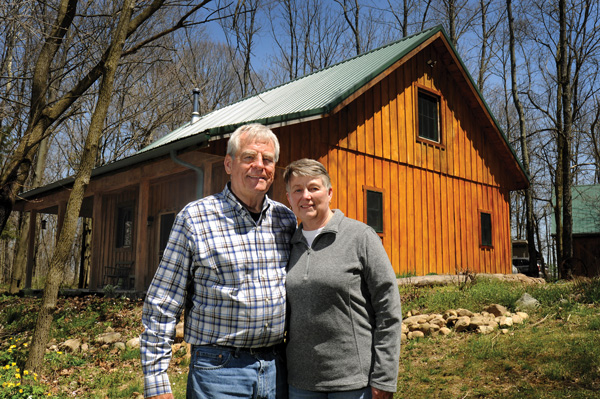 Several years and more than 25 property visits later, Doepker had found it — 22 densely wooded acres in Darke County, Ohio, about an hour northwest of Dayton.
Several years and more than 25 property visits later, Doepker had found it — 22 densely wooded acres in Darke County, Ohio, about an hour northwest of Dayton.
“I called my wife and said, ‘I think this is it.’”
And it was.
They purchased the property in 2006 and planned to build a cabin near the pond. Doepker’s plans were waylaid a bit as he participated in the development of the University of Dayton China Institute shortly after his retirement in 2011. By 2013, the professor emeritus was consulting with a forester onsite. Walnut, oak, cherry, poplar and ash were all in great supply, which was ideal as he wanted to build the structures from the trees on his property. Initial thoughts were to build a modest 300- to 500-square-foot cabin, but when he realized that more than 100 ash trees would have to be harvested because of the emerald ash borer, his plan expanded.
The harvest amounted to 30,000 board feet of lumber. The modest cabin doubled in size, and a barn was also now on the drawing board.
“I came up with designs for the trusses and determined the strength of the materials,” he said. “I was doing on my property the kinds of things I taught in class. If I wanted to relax, I’d draw or make calculations.”
Doepker went from architect to project manager as he hired a construction team and acquired all the necessary permits. There was even a little of UD in his construction plans: A walk he took across campus nearly 20 years ago netted him some of the old St. Mary’s Hall windows discarded during the historic building’s renovation. He pulled them out of the dumpster and repurposed 10 of those windows — rounded tops and all — in their cabin.
The distance from the main road made running a power line cost-prohibitive, so Doepker decided to use solar panels to power his 904-square-foot cabin.
“With the exception of a delivery of propane once a year, we are pretty much off the grid,” said Doepker, 73.
Once the construction crew finished, Doepker went to work on the interior, including, most recently, an IKEA-designed kitchen.
While he and Bonnie — the couple just recently celebrated their 50th wedding anniversary — reside primarily in Springboro, Ohio, Doepker is at the cabin at least three times a week, spending a few nights a month.
“I could live out there,” he said. “And it has become a focal point for social gatherings with family and friends.”
And there is no better feeling than watching his adventurous 4-year-old granddaughter chasing frogs around the 1-acre pond — his 1-acre pond.
Carroll Schleppi
When her husband, John Schleppi, was offered a buyout from the School of Education and Allied Professions, Carroll Schleppi knew it was time to retire in 2001 from her position in the Department of Mathematics.
“There was no way I was going to get up to go to work if he wasn’t,” she said, smiling.
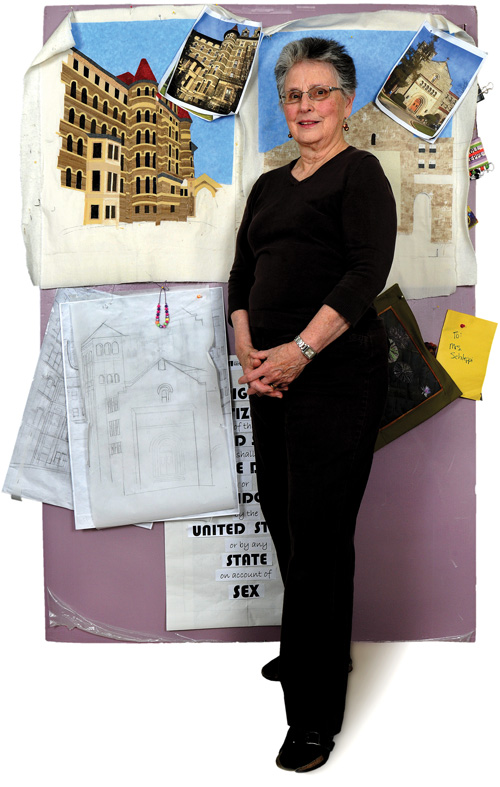 The professor emeritus, who taught at UD for 17 years, soon found another rewarding reason to get up in the morning.
The professor emeritus, who taught at UD for 17 years, soon found another rewarding reason to get up in the morning.
“The first thing I did was pursue my love of art with quilts,” she said. “I would have loved to have studied art or philosophy when I went to college, but my dad said I needed to be able to make a living, so I went with math.”
The freedom of retirement finally let the now 76-year-old pursue her artistic passion. Fabric was a natural choice for the mother of three who took sewing lessons as a child and created clothes for her family when she was a stay-at-home mom. Schleppi’s idea of quilting, however, is not what many think of when they hear the term — no cookie cutter patterns or traditional designs. Schleppi is an art quilter — exactly what it sounds like — creating original works of art with fabric as her canvas.
“The first thing I found out about traditional quilting was that I didn’t like it because I don’t like to follow the rules,” she said. “I was drawn to art quilting because you don’t have rules.”
Schleppi, who lives in Kettering, Ohio, discovered the Miami Valley Art Quilt Network, and her passion was ignited.
“We consider ourselves fiber artists,” she said. “We paint with fabric instead of oils or acrylics.”
Her work is varied, from quirky puns to nature and history. She was part of a project celebrating the Negro Leagues and is currently working on a project celebrating the 19th Amendment. Each artist selected a suffragette to commemorate. Schleppi chose Frances Ellen Watkins Harper, an African-American poet, abolitionist and women’s rights advocate.
“I think it was her poetry that made me choose her — the fact that it was written so many years ago yet is contemporary today,” Schleppi said.
Schleppi’s work has won awards and been displayed in museums, but neither are the reason she creates. She is both an artist and a storyteller and said she enjoys the process more than the finished product. And she finds a way to interweave her many excursions into her quilts as she uses fabric she has gathered during her world travels. From a bag of scraps purchased from a silk factory in China to clothing found in European thrift stores and fabric bought at her favorite shop in the Caribbean island of Curacao, the quilts are a product of her imagination and her travels.
While quilting brings her great joy, she keeps very few of her many finished pieces.
“Once I’m finished, I feel no ownership,” she said. “For me, the joy is in the creation, not in the result. When it’s over, I’m happy to let it go.”
And, then, it’s on to the next one.
Dick Ferguson ’73
Dick Ferguson ’73 saw firsthand the power of touch when his mother was living with dementia. Ferguson watched as her condition silenced and isolated his once outgoing and articulate mom.
“But I found that if I gently rubbed her hand and massaged her face, she was able to communicate and tell the story of her life,” he said. “It was dramatic to me, the change I saw in in her.”
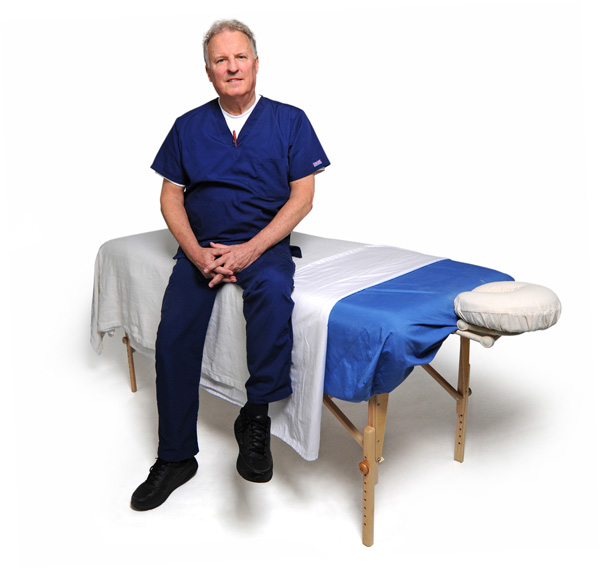 Those cherished moments with his mom — Ferguson describes them as “spiritual” — contributed to his decision to pursue an encore career as a licensed massage therapist. After spending more than four decades on the University of Dayton campus — serving in a variety of positions including admission counselor, director of University communications, assistant dean of the School of Law, associate provost, assistant to the president and his final position as the Fitz Center for Leadership in Community executive director, from which he retired in 2014 — the Beavercreek, Ohio, resident was ready for a change.
Those cherished moments with his mom — Ferguson describes them as “spiritual” — contributed to his decision to pursue an encore career as a licensed massage therapist. After spending more than four decades on the University of Dayton campus — serving in a variety of positions including admission counselor, director of University communications, assistant dean of the School of Law, associate provost, assistant to the president and his final position as the Fitz Center for Leadership in Community executive director, from which he retired in 2014 — the Beavercreek, Ohio, resident was ready for a change.
“That first year after I retired I spent writing about leadership, but I found it to be a lonely experience,” he said. “I wanted to find something that was less cerebral after more than 40 years in higher education.”
Little did Ferguson know how academically rigorous his new pursuit would be. Challenging classes in anatomy, physiology, business and ethics filled his days. Of the 28 students who enrolled in the program with Ferguson, only nine graduated with him a year later and were licensed by the State Medical Board of Ohio.
“I was 65, in class with 22-year-olds, and it was an incredibly challenging experience,” he said. “I am jealous now of those in the medical profession. I think if I had taken anatomy and physiology in high school or college, I definitely would have gone into some kind of medicine.”
Ferguson has been practicing therapeutic massage since December 2016, giving more than 800 massages in his first 18 months. He practices in three facilities, working as many as six days a week. At 67 years old, however, he knows his limitations.
“Two or three massages per day is my limit so I can still feel retired and be able to stand,” he said with a smile.
The self-proclaimed “old guy in massage” cherishes the opportunity to introduce people to the many benefits of massage. He provides as many as 80 percent of his massages free of charge or at a significant discount to encourage people to give it a try. But his clients aren’t the only ones who reap the benefits of Ferguson’s encore career.
“I find this as rewarding as anything I’ve done professionally,” he said. “It’s a role I can play that’s a different kind of service to the community.
“And there’s just something about human touch that we really need in this world.”
Patti Procuniar
Winters were challenging for outdoor enthusiast Patti Procuniar, so January and February meant regular kickboxing classes for many years to keep her busy and active. But when that class was canceled, she and her husband decided to take a beekeeping class offered by the Greene County, Ohio, Park District. Before long, Bill Procuniar built several hives on the couple’s Sugarcreek Township property, southeast of Dayton.
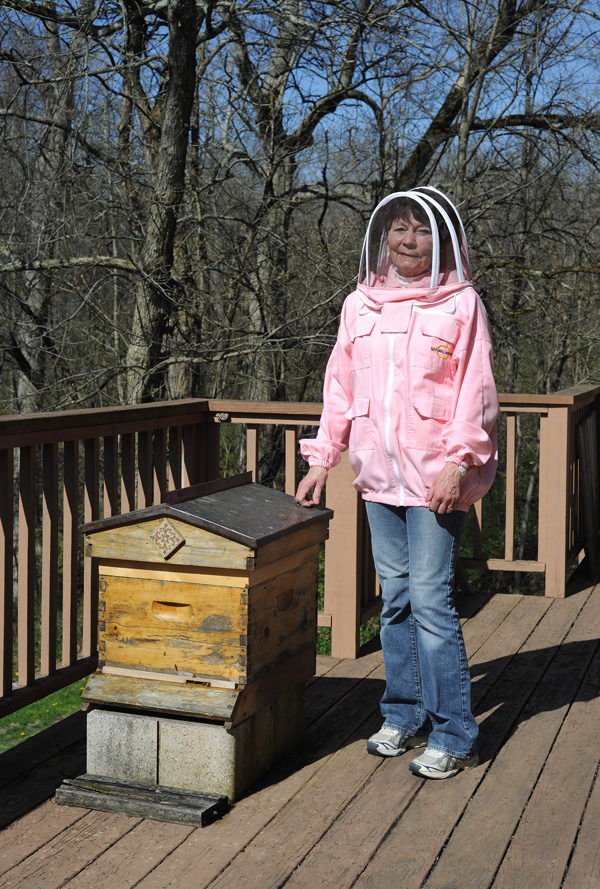 It’s not unusual for the couple to get a call from a neighbor and head out to collect a swarm — essentially a ball of bees surrounding a queen that has escaped from a hive. With a baseball bat, Bill Procuniar whacks the tree limb from which the swarm hangs, while Patti Procuniar — wearing a beekeeper’s veil — holds a box with a funnel attached to catch the falling swarm. The swarm usually weighs in at 4 or 5 pounds.
It’s not unusual for the couple to get a call from a neighbor and head out to collect a swarm — essentially a ball of bees surrounding a queen that has escaped from a hive. With a baseball bat, Bill Procuniar whacks the tree limb from which the swarm hangs, while Patti Procuniar — wearing a beekeeper’s veil — holds a box with a funnel attached to catch the falling swarm. The swarm usually weighs in at 4 or 5 pounds.
“We’re not the brave people climbing huge ladders, but catching a good swarm is really exciting,” she said.
Even after several years of beekeeping, however, Procuniar’s disbelief is still apparent.
“I never thought I could do this; it’s hard to imagine that we are actually beekeepers,” she said, smiling.
But beekeepers they are. In fact, a shipment of more than 10,000 bees that arrived in April got the couple’s 2018 hives going. By the end of the summer, that number will likely have increased to 45,000 in that one hive alone — 45,000 of her babies.
“We are also master gardeners, and when I’m outside, they will walk on my arms,” said Procuniar, who retired in 2015 as a program assistant with the Center for International Programs after working at UD for nearly 26 years. “They’re just very dear.”
That’s not to say they don’t misbehave at times; the 68-year-old has had as many as 11 stings on one hand. But the minor pain is no match for the payoff.
“We think it’s just wonderful for the environment and so important for pollination,” she said. “And they are such fascinating creatures.”
Even several years into her pastime/passion, that fascination continues to grow. As members of the Greene County Beekeepers, she and her husband attend monthly meetings, and the learning never ends.
“There is a class with the meeting, and it’s always good information,” Procuniar said. “Before we got started, it was hard to imagine us as beekeepers. Now it’s hard to imagine us not doing it.”
Jerry Strange
Jerry Strange’s first foray into music was short-lived.
“I was 7 or 8 years old, and my mother had me take piano lessons,” said Strange ’57, who was on the UD math faculty for 41 years before retiring in 2000. “After a few weeks of not practicing, she said she wasn’t going to pay for lessons anymore. So, I went through the rest of my life, until I was 70, enjoying music but not playing it.”
Strange and his wife of close to six decades, Hylda, both enjoy music. It was on a trip from the couple’s home in Centerville, Ohio, to their weekend house in Ripley, Ohio, that Strange became intrigued by a folk instrument known as a dulcimer.
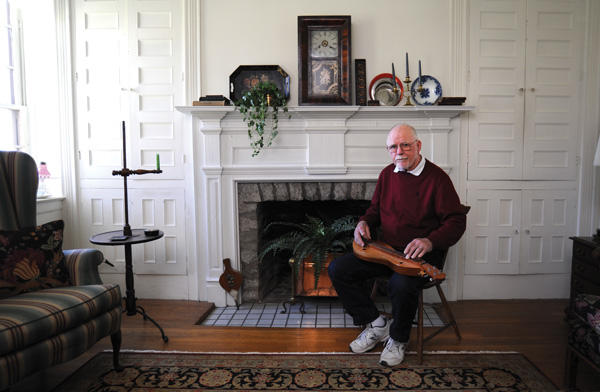 “We had gone to a dulcimer concert, and I thought, ‘I really like the sound of that music,’” he said. “And a dulcimer only has three strings. I figured it had to be reasonably easy to play. I had this fantasy that I was going to showcase my musical talent and become a dulcimer player of some repute.”
“We had gone to a dulcimer concert, and I thought, ‘I really like the sound of that music,’” he said. “And a dulcimer only has three strings. I figured it had to be reasonably easy to play. I had this fantasy that I was going to showcase my musical talent and become a dulcimer player of some repute.”
For more than a decade, the professor emeritus has been fine-tuning his dulcimer skills. He plays with a small group on most weekends and practices daily. Strange said he knows 25 or 30 songs from memory, but he would be the last one to call himself a musician — more, he said, “like a robot that has been taught how to play music.”
“One thing I’ve discovered about myself as a result of this experiment is that I’m very poor at multitasking,” he said. “For example, I can’t read music and play at the same time. Some people think I’m a musician because I can memorize a piece and play it, but I don’t think that qualifies me as a musician.”
That’s not to say the 83-year-old isn’t having a great time playing the dulcimer.
“I really enjoyed being at UD; I can’t think of anything I could have done for 40 years that could have been better,” he said. “You might have thought someone who was so attached to the University would have a tough time adjusting to retirement, but when the time came, I pretty much gave up mathematics and teaching and put my energy into developing other interests — like playing the mountain dulcimer.”